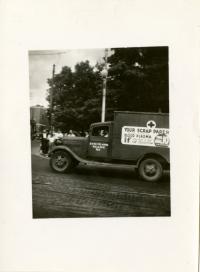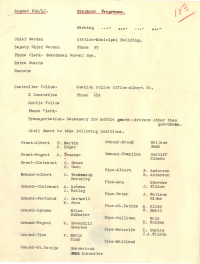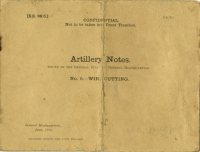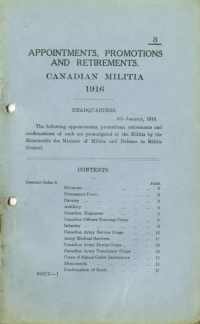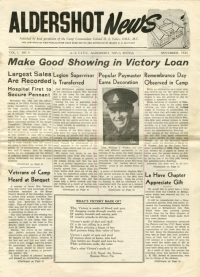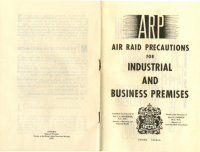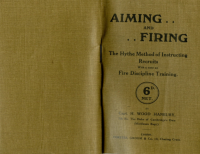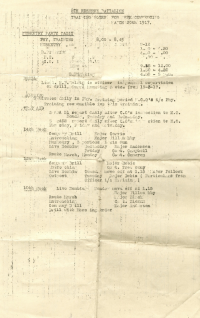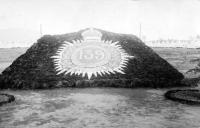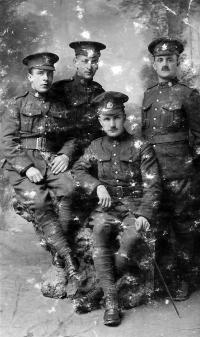Fighting
The Royal Canadian Army Medical Corps on parade
During the Second World War, the Royal Canadian Army Medical Corps was responsible for the treatment and rehabilitation of Canadian casualties in all theatres of war. These photographs, likely taken sometime in the summer of 1940, show an ambulance from Kitchener-Waterloo's 24th Field Ambulance. The banner hanging from the side of the ambulance reads: "Your Scrap Paper will make cartons for Blood Plasma if you put it out for collection on Thursday, August 10".
Blackout Programme
This document outlines the procedure in the event of an electrical blackout. Roles and duties were assigned to various men, with an emphasis on public safety and protecting the infrastructure.
Artillery Notes - Wire Cutting
Wire-cutting is a technique used during military battles to counter the enemies' use of barbed wire. This handbook offered information to soldiers about the best methods for wire-cutting, the procedures, as well as important safety considerations. Booklets such as these contained confidential information regarding plans of attack, and therefore were forbidden from being brought to the frontlines.
Appointments, Promotions and Retirements
These booklets were issued by the Minister of Militia and Defense in Militia Council for the Canadian Militia. The purpose of these booklets were to document the members within each rank, their regiment, and any changes to rank/position.
Infantry training news
The newspaper of the Canadian Infantry Training Centre in Aldershot, Nova Scotia, was intended to keep the community informed of happenings on the base, with articles on staff members, past and present students, sports, and society gossip.
ARP: Air Raid Precautions for Industrial and Business Premises
This training manual was published by the Air Raid Precautions (ARP) Organization to protect Canadian industrial facilities and their workers. This manual refers to a real-life air raid (the "Amazing Summer" in Britain, 1940) in order to teach individuals what to expect, and what to do, in the event of an enemy attack.
Aiming...and...Firing
This training manual served to standardize infantry training by teaching musketry instructors and training officers the 'Hythe Method'. This text offers instructions for loading and unloading, shooting positions, and even muscle exercises.
Training Notes - 8th Reserve Battalion
Training notes issued for the 8th Reserve Battalion in 1917. This document lists the soldiers' daily schedule, drills, and supervising officers.
139th Battalion CEF
The 139th battalion was recruited in Northumberland County and mobilized in Cobourg, Ontario, with a strength of 21 officers and 495 other ranks. The battalion embarked from Halifax on 27 September 1916, on the troop ship Southland, and disembarked in the UK on 6 October.
138th Battalion CEF
The 138th battalion was recruited and mobilized in Edmonton, Ontario, with a strength of 32 officers and 870 other ranks. The battalion embarked from Halifax on 24 August 1916, on the troop ship Olympic, and disembarked in the UK on 29 August.

